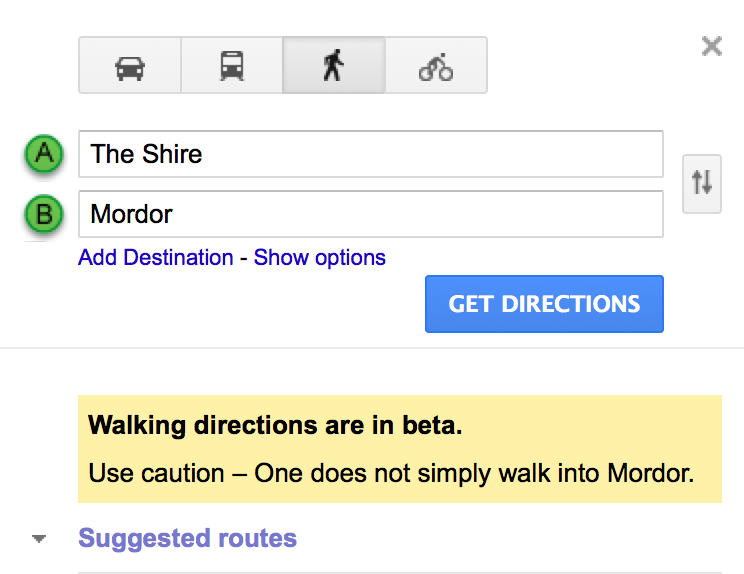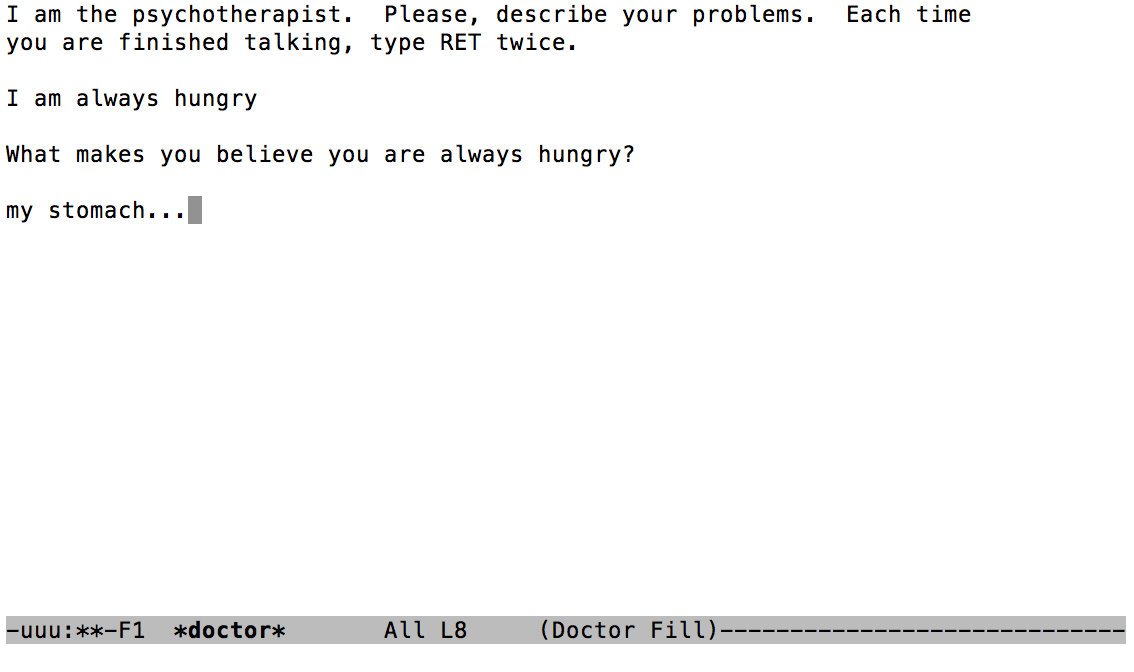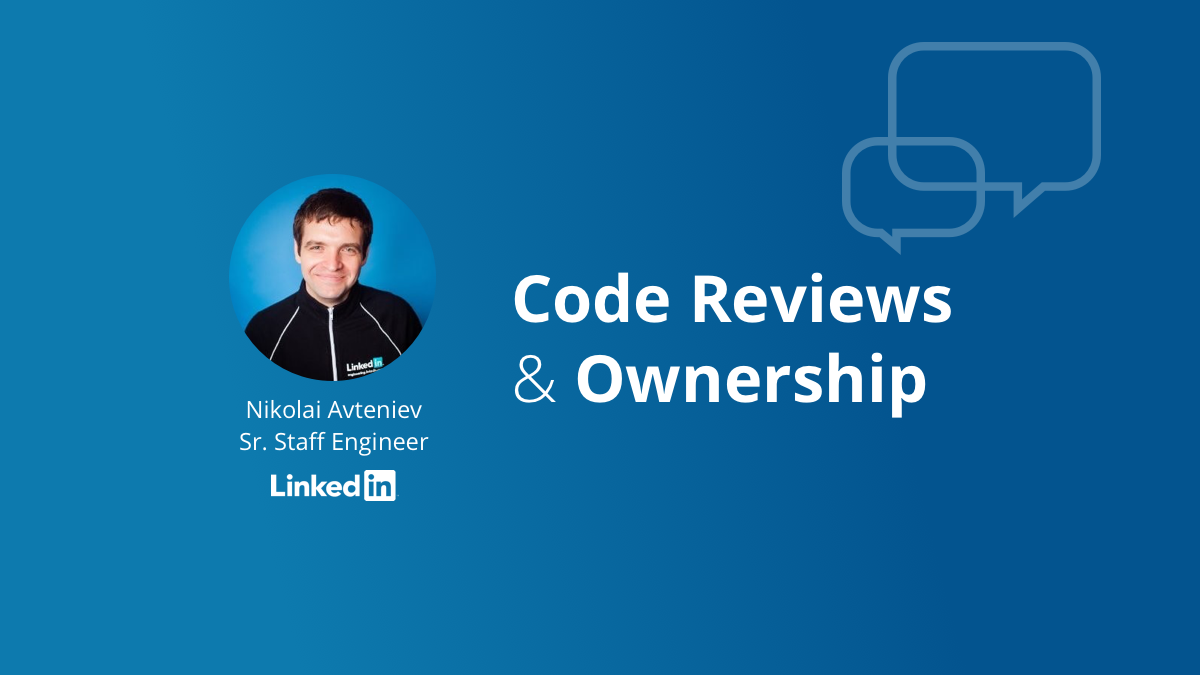 (License)
(License)
Coding Easter Eggs. An unprofessional prank that humorless bosses disdain with a passion, but a great way to keep creative programmers happy and productive, as planting Easter eggs shows their love for the project or allows them to harmlessly vent their frustrations. In essence, Easter eggs are a way for those faceless developers behind your favorite applications to leave their mark. Yet to successfully plant an Easter egg, the programmer usually has to keep it a secret from his or her colleagues, boss, and clients, making it a somewhat controversial practice.
While some bosses or clients may find Easter eggs unacceptable, outsiders such as you and I find these hidden secrets quite the entertainment. Other than your favorite games, several big products you’re all familiar with such as Google, Facebook, Twitter, and Apple, have hidden Easter eggs. If you didn’t already know about Easter Eggs (*gasp*, the blasphemy!), here is a quick rundown on some of the most famous types:
1. The Konami Code

It would be a great disrespect to not mention the Konami Code first. Probably the mother of all Easter eggs, the iconic “up, up, down, down, left, right, left, right, B, A” was originally created by Kazuhisa Hashimoto for the NES arcade game Gradius, as he found the game too difficult when testing and devised this little code to give the player a massive power-up. The cheat remained even upon release, so people discovered and shared the code. Needless to say, the cheat was such a hit many programmers now pay homage to it by requiring the code to unlock Easter eggs, be it in game like the Assassin Creed 3’s Turkey Assassin or a mobile app like Google Voice (where you say the Konami Code to unlock a “Cheat Mode”).
Although it all started with a game, the Konami Code is now most often found in websites.

One of the most amusing Konami Codes on web apps have been the Newsweek’s Zombie apocalypse (sadly removed), ESPN’s ponies (also sadly removed but you can still see an example of what it would have been like at http://www.cornify.com/), Buzzfeed’s homepage (it used to force you to look at Justin Beiber, but now it’s a Sloth feed, which is much more merciful and cute), and the Wired UK’s Nyan Cat and raptors.

One has to wonder how much traffic those sites got from onlookers who are there for the Easter eggs….
2. Search Engines
Google loves its Easter eggs. There are so many Easter eggs in Google and Youtube it would take an entire post to list them all in detail. True to the nature of these sites, most Easter eggs are uncovered after you search certain terms.

Whether it’s Google Maps where “One simply does not walk into Modor” or the various search terms such as “tilt”, “do a barrel roll”, or “zerg rush” on Google Search that mess with your screen, or searching for “beam me up scotty” or “do the Harlem shake” on Youtube.
3. Hidden features in the about & special customization requirements
About pages or information often have Easter eggs, and Mozilla Firefox’s Book of Mozilla and Robots page have been classic examples of software Easter eggs for a while now.

If you hate the new Australis layout from Firefox 29 and above, at least you can entertain yourself with the fairly new unicorn Easter Egg where you remove absolutely everything from your menu (including cut & paste and zoom), exit customization, and then click on the hamburger icon again.
 One has to wonder why these programmers like unicorns and ponies so much….
One has to wonder why these programmers like unicorns and ponies so much….
4. Keyboard Shortcuts
Some features are only available after using a combination of keyboard gestures. If you own a mac with OSX, you’ve probably already heard of the infamously unhelpful Emacs psychotherapist, Eliza. Although Apple itself wasn’t behind this snarky shrink, her sheer existence has amused many, though most of the expectations were crushed by the frustrating reality of how uncooperative Eliza is.

To experience the wondrous exasperation yourself if you haven’t already, access your terminal through searching “terminal” in spotlight, type and enter emacs and then activate the lulz mode by simultaneously pressing the [Esc] and [x]. You can meet Eliza after entering doctor, in which she will supposedly answer anything you type by pressing return twice. If you’re particularly nostalgic of the pixilated old-school games of the past, you can also play snake or tetris by typing snake or tetris instead of doctor.
Other than the emacs lulz, you can make your Mac OSX’s weather widget show the weather of “Nowhere.”

If you don’t already have a weather widget in your dashboard, simply add one by going to your dashboard and clicking on the “+” sign on the bottom left corner of the screen. Then, hold “Command” and “Option” when you click on the widget. You will now see the weather report of “Nowhere”!
5. ASCII drawings and cute jokes
Those with a Linux-based OS such as Ubuntu or Debian probably find the super cow powers of their apt-get package manager highly amusing. Users will get the hint of this fun Easter egg through typing the command line:
apt-get help
Where they are informed about a mysterious super cow power. Upon typing
apt-get moo
A strange thing happens.
(__)
(oo)
/------\/
/ | ||
* /\---/\
~~~~
...."Have you mooed today?"...
This Easter egg was snuck in by the main developer and apparently cow-lover Jason Gunthorpe, and has been a classic example of Easter eggs ever since, and later on Daniel Burrows paid homage to it by adding a corresponding Easter egg.
$ aptitude moo
There are no Easter Eggs in this program.
$ aptitude -v moo
There really are no Easter Eggs in this program.
$ aptitude -vv moo
Didn't I already tell you that there are no Easter Eggs in this program?
$ aptitude -vvv moo
Stop it!
$ aptitude -vvvv moo
Okay, okay, if I give you an Easter Egg, will you go away?
$ aptitude -vvvvv moo
All right, you win.
/----\
-------/ \
/ \
/ |
-----------------/ --------\
----------------------------------------------
$ aptitude -vvvvvv moo
What is it? It's an elephant being eaten by a snake, of course.
So, what about our mentors? Have they ever sneaked Easter Eggs into their code? We asked our Codementors and here are some of their responses!
 A Codementor who chose to be anonymous
A Codementor who chose to be anonymous
I added an ASCII-fied image of Carlton from the Fresh Prince of Bel-Air into the source of a financial application still being used by 3 large banks.

Saurabh is the founder of Gohungry and an online instructor at Udemy for Html5 and Javascript Animation.
Search Engine is a python program which searches for webpages in preprocess index for a given keyword and returns best results based on a rank algorithm. I had done some optimization using Beautiful soup (Parse webpages) and made search engine polite using robotexclusionrulesparser to respect robots.txt.
Gordon is one of the top 3 contributors to the Stack Overflow PHP tag and had 10+ years of experience with web-related technologies
Eight years ago, I’ve developed a coaching platform. Users could enter problems into the system and then get a couple of questions that help them reflect on that problem and solve it on their own (or request personal coaching). When someone would enter “What is the Answer to the Ultimate Question of Life, the Universe, and Everything” as the problem, the system would reject that question with a flash message stating that the answer is 42. No one ever did though.
Nowadays I do not put Easter eggs into software anymore. Somewhere along the way I understood that it’s unprofessional and irresponsible to put “hidden features” into a software that are not known by the product owner. It undermines trust with business, wastes stakeholder money and potentially introduces bugs.
Sneaking Easter eggs into a product risks losing the client, your job or even your colleagues job. Don’t do it. Put your name in a test fixture instead. Test fixtures are the perfect place to put all these nerd culture references we love so much.
Daniel has been a web developer for 15+ years where he specializes in WordPress and JavaScript
At a place I used to work, I continued development on an application that we called the “Management Action Plan”, MAP for short. I had a small child (we still have the child, she just isn’t so small anymore) at the time who was IN LOVE with Dora the Explorer. So I hid the video of the Map song behind a keyboard shortcut (Ctrl + M + A + P). No one ever found it to my knowledge.
Tim is a LAMP Developer who specializes in Eloqua, Responsys, Magento, sugarCRM and WordPress
I put a Javascript for the Konami Code (Up, up, down, down, left, right, left, right, B, A, start) into a client’s website that brought up a special banner.
Even if these Easter eggs are nerdy, they are nerdy jokes that will bring a smile to anyone who finds them—what harm can come out of a laugh?
